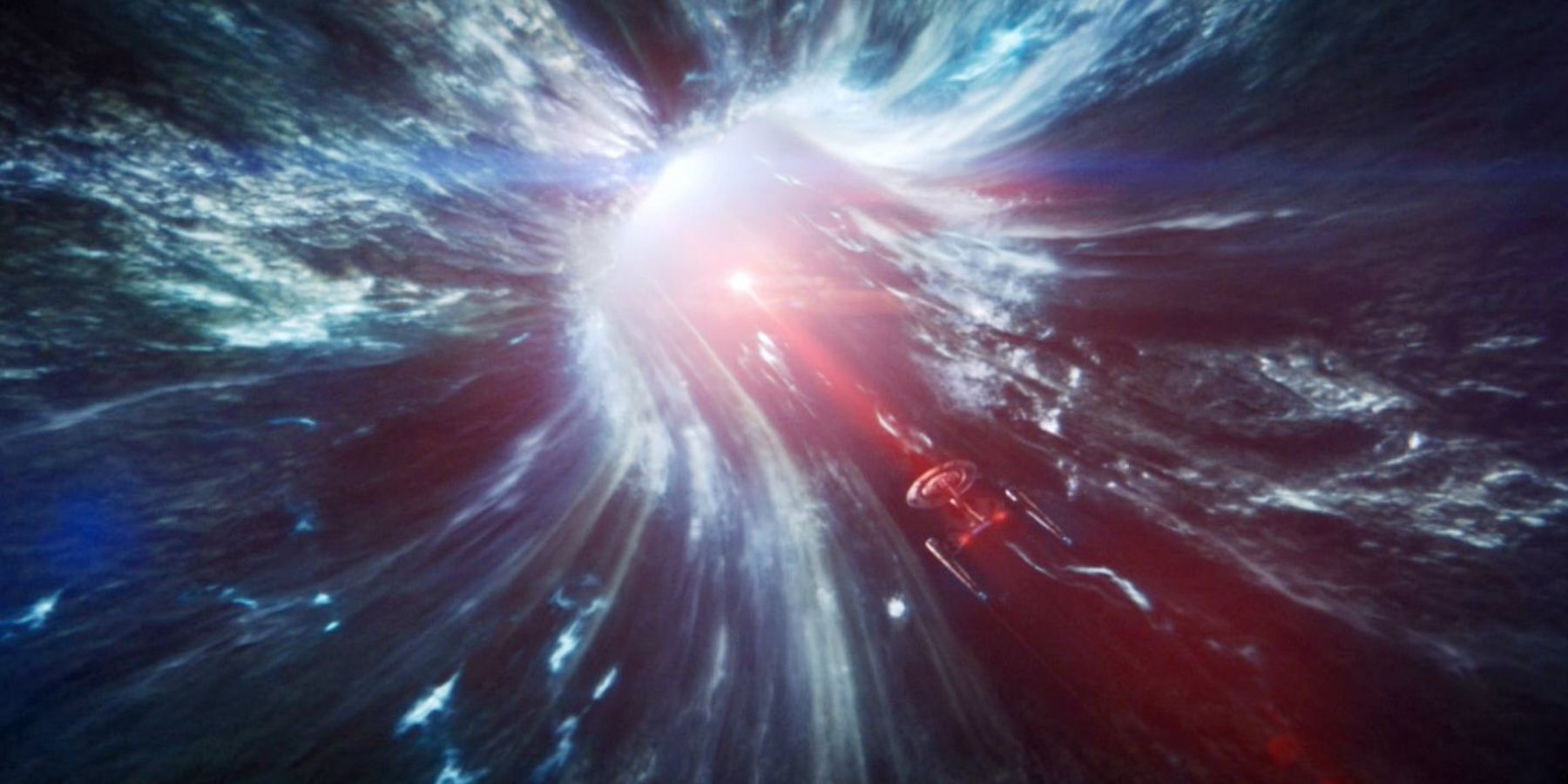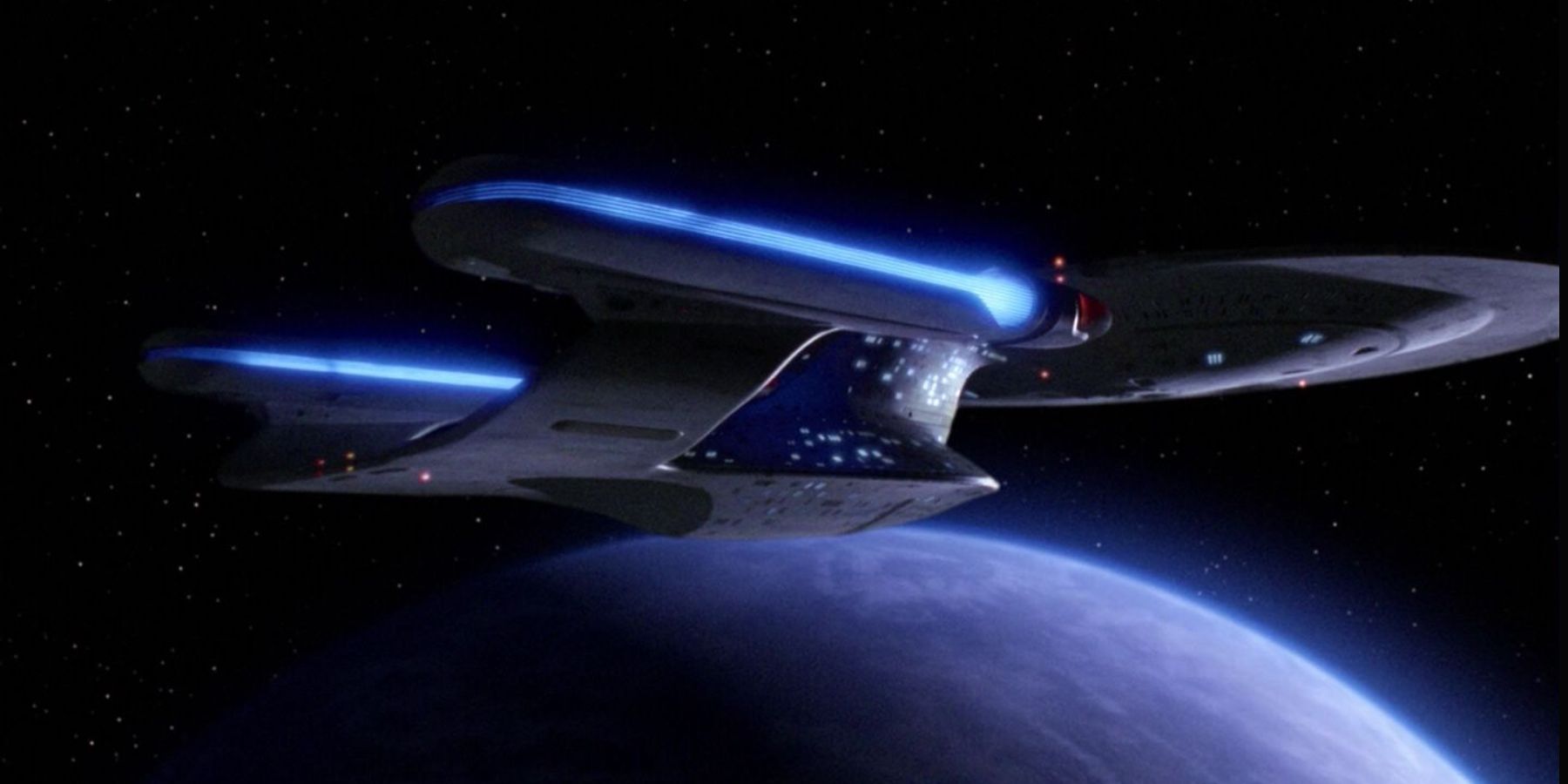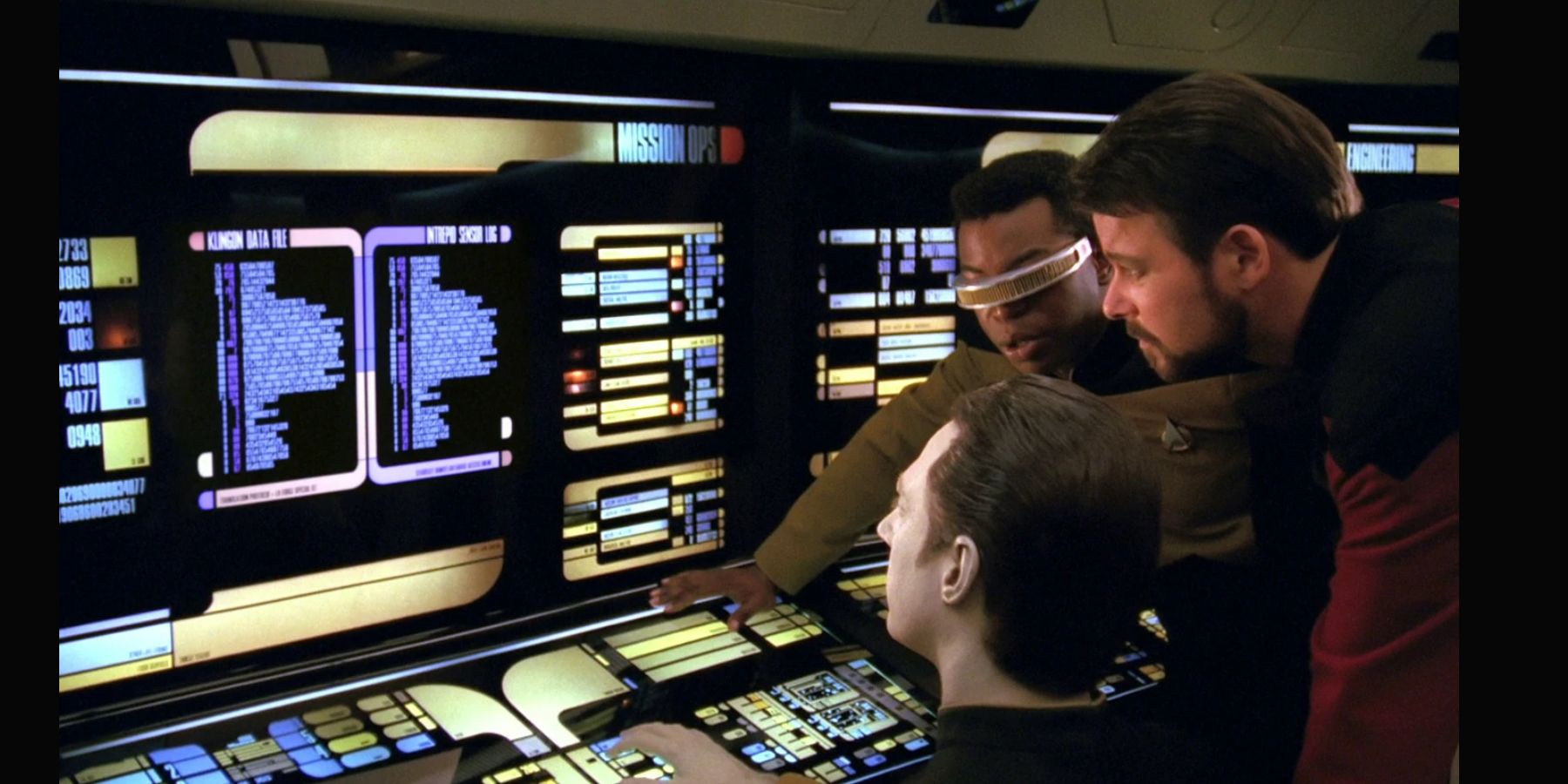When Gene Roddenberry first proposed his revolutionary idea of Star Trek: The Original Series it was unlikely he would ever have imagined how influential the show would become, to the point where modern technology was influenced by the fictional science presented in the show. As a result of the universe expanding, the literal in-world universe keeps getting bigger, with the introduction of new alien races and worlds. To traverse this large and expansive space the writers needed to devise a way to get from point A to B as quickly as possible, and so the warp engine was devised. It does raise a question, though: when traveling at such speeds how do they avoid colliding with things along their journey?
To explore this, it’s important to get at least a vague understanding of how warp works. (This gets even more vague when taking into account the continuity errors shown in Discovery.) The warp drive aboard many ships in the franchise works by creating a warp field that allows the ship to travel faster than the speed of light. This is a very basic explanation of the vast amount of fictional science that goes into how they work. A lot of people jump to the magical science to explain how ships avoid other ships, planets, stars, and other random space detritus, alluding to how the warp drive allows the ship to traverse through non-physical space.
This is a perfectly reasonable explanation, the reality of warp being far from grounded in modern-day theories and science. It only makes sense that in order to travel faster than what is deemed possible (much, much faster than light), the ship transcends into some different layer or space or reality, able to bypass the physical things that get in the way.
The other argument, however, is that ships going at warp do exist in the physical plane. Although neither argument is fully confirmed in the franchise, this latter option seems far more likely following a more realistic train of logic. The reason that ships don’t collide with other things, then, is suggested to be because space is ridiculously big. After all, the universe contains a whole lot of nothing. Douglas Adams summarized this scale best in The Hitchhiker's Guide to the Galaxy:
“Space is big. You just won't believe how vastly, hugely, mind-bogglingly big it is. I mean, you may think it's a long way down the road to the chemist's, but that's just peanuts to space.”
Because of this enormous scale, it would statistically be much harder to actually hit something in space rather than avoiding it. The math supports this too. It is estimated that the distance between stars in the galaxy is around about 4-5 light years. With this in mind, some very clever people have worked out that if a ship were traveling at warp at an average of 100 light years a day, the chance of a ship hitting a star is less than 1 in a hundred trillion. This means that, even with an estimated 10,000 other Federation starships doing the exact same thing, a collision would only happen once every hundred millions years.
This math only takes into account the reality of known stars in the galaxy, but it’s safe to imagine that the statistics would still be staggeringly in favor of a starship to avoid planets as well (which are, on average, only a tiny fraction the size of a star) and other space debris. The irony here is that it would seem far more likely for a ship to be unable to find their destination than it would be for them to accidentally collide with something.
While the odds are very much in favor of blindly (and boldly) traveling in warp without the fear of hitting something, the Federation does have many tools in its arsenal to help ensure this will never happen. Rather than selecting a destination on their intergalactic map and pressing ‘go,’ the ships in Star Trek always have a navigator plotting a course through space, as well as an incredibly advanced computer to stop these 1-in-a-hundred-trillion collisions from happening. The navigator might plot a course that avoids a particularly turbulent area of space, or that avoids any large clustering of asteroids or space stations. Most of this would be done automatically by the computer, making slight adjustments while in warp to shimmy past any new dangers their long-range sensors could detect.
The sensors themselves are worth noting here as well, as Starfleet's spaceships are often traversing space that is not yet explored (particularly in the mixed-reviewed show Voyager). Thus, a reliable and detailed map of any potential obstacle would not have been recorded. The navigational sensors, then, are vital, powerful enough to not only scan a large area of space when the ship is at a standstill but also actively update the ship's intergalactic map while at warp. These sensors make sure to avoid any new small thing automatically or alert the navigator to any larger obstacles or things of intrigue along the way.
The only other thing that could present a threat to the ship when traveling through space at such speed would be smaller rocks or space debris, something that poses a real threat to modern-day spaceships (shown dramatically in the movie Gravity). However, these things would likely not pose a threat to the federation ships. The Enterprise and its ilk are equipped with what is known as a navigational deflector shield, which is designed to deflect and move small objects out of the ship's path. The only issue with this is that other than this description they may as well work by magic, as the science behind them is never fully fleshed out.






